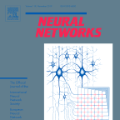Recently, surrogate models based on deep learning have attracted much attention for engineering analysis and optimization. As the construction of data pairs in most engineering problems is time-consuming, data acquisition is becoming the predictive capability bottleneck of most deep surrogate models, which also exists in surrogate for thermal analysis and design. To address this issue, this paper develops a physics-informed convolutional neural network (CNN) for the thermal simulation surrogate. The network can learn a mapping from heat source layout to the steady-state temperature field without labeled data, which equals solving an entire family of partial difference equations (PDEs). To realize the physics-guided training without labeled data, we employ the heat conduction equation and finite difference method to construct the loss function. Since the solution is sensitive to boundary conditions, we properly impose hard constraints by padding in the Dirichlet and Neumann boundary conditions. In addition, the neural network architecture is well-designed to improve the prediction precision of the problem at hand, and pixel-level online hard example mining is introduced to overcome the imbalance of optimization difficulty in the computation domain. The experiments demonstrate that the proposed method can provide comparable predictions with numerical method and data-driven deep learning models. We also conduct various ablation studies to investigate the effectiveness of the network component and training methods proposed in this paper.
翻译:最近,基于深层学习的代用模型吸引了对工程分析和优化的极大关注。由于大多数工程问题的数据配对的构建耗时,数据获取正在成为最深的代用模型的预测能力瓶颈,这种模型也存在于热分析和设计的代用模型中。为了解决这一问题,本文件为热模拟代用模型开发了一个物理知情的进化神经网络(CNN ) 。网络可以从热源布局到稳定状态温度场进行测绘,而没有标签数据,这等于解决全组部分差异方程式(PDEs),为了在没有标签数据的情况下实现物理指导培训,我们使用热导方程式和有限差异法来构建损失功能。由于解决方案对边界条件很敏感,我们适当地设置了一个物理知情的进化神经网络网络网络网络网络(CNN ), 此外,神经网络结构的设计非常完善, 以提高手头问题的预测精确度, Pixel 级别的在线硬模范式采矿(Pixel ) 提供了在深层计算网络中克服优化难度的方法。我们还运用了计算模型, 以数字分析方法, 演示了计算模型, 和计算模型的模拟方法可以提供可比较化的计算模型。我们用数字分析方法, 研究。我们提出的数字分析方法可以提供可比较的模型。




